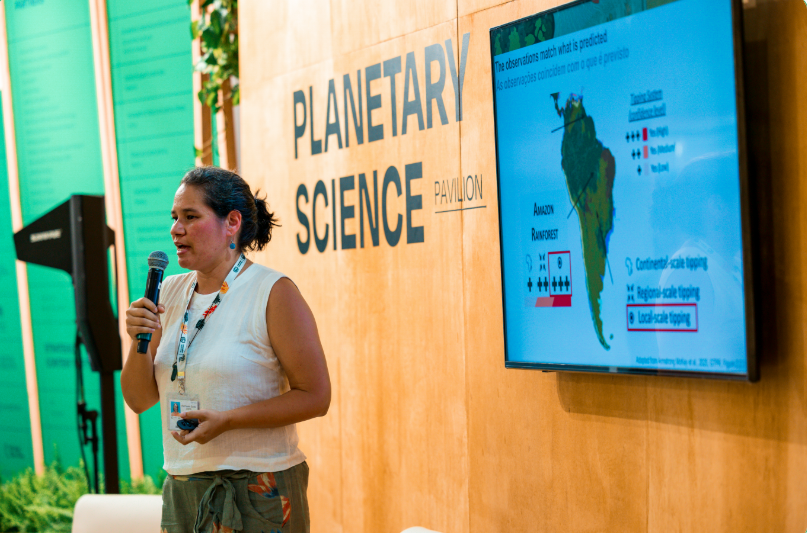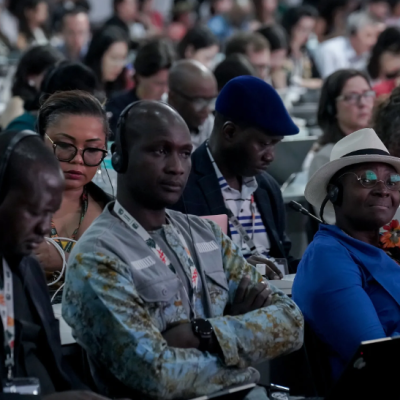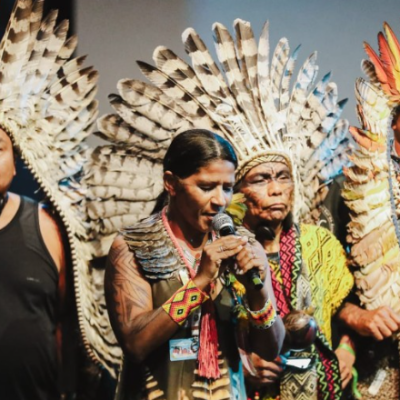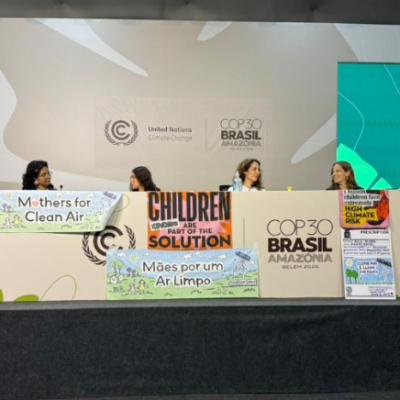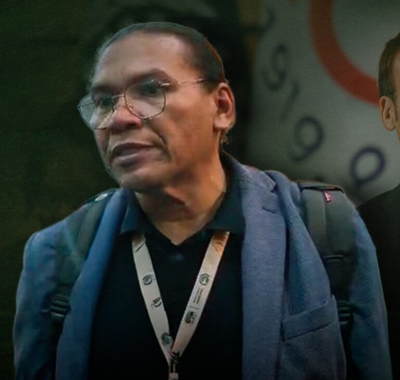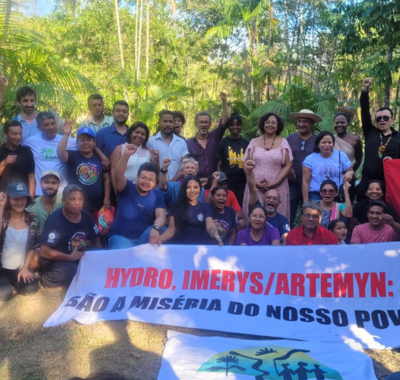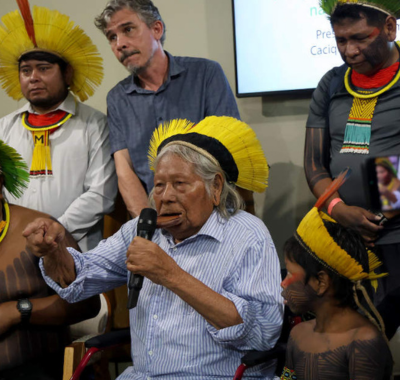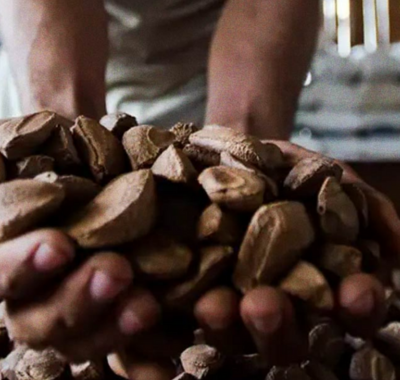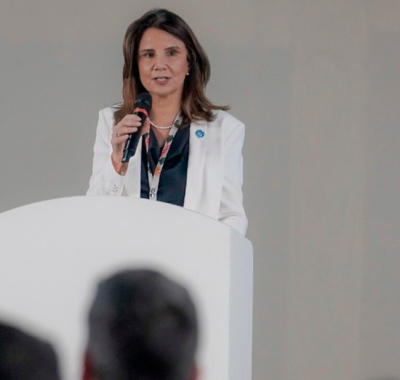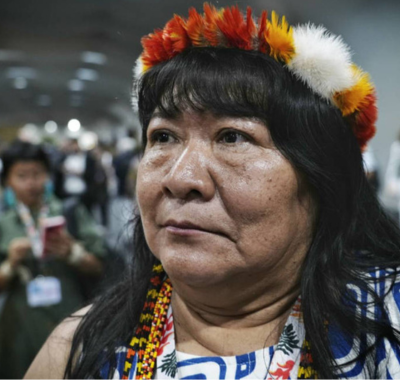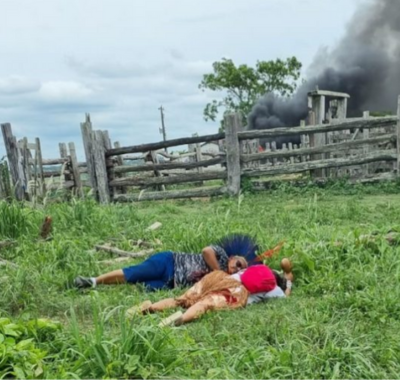The second Amazon Assessment Report – Connectivity of the Amazon for a Living Planet (AR2025), prepared by the Science Panel for the Amazon, brings together scientists, indigenous peoples, local communities and partner institutions from across the Pan-Amazon region.
Text by Letícia Klein. Edited by Ricardo Garcia. Reviewed by Carla Fischer
Photos by Marcio Nagano and Marx Vasncosselos
The Amazon – home to 47 million, including 2.2 million indigenous people from 400 ethnic groups and about 52,000 species of animals and plants (13% of known species) – faces increasing pressures. And the key word to address them is connectivity, according to the second Amazon Assessment Report – Connectivity of the Amazon for a Living Planet (AR2025), prepared by the Science Panel for the Amazon (SPA), an initiative of the United Nations Sustainable Development Solutions Network (SDSN).
The publication, released Tuesday (11) at the Planetary Science Pavilion at COP30, is the most comprehensive scientific analysis ever conducted on the Amazon. Produced by 145 internationally renowned scientists and experts, the report highlights the urgent need to preserve the biome’s connectivity: the ecological, climate, cultural and socioeconomic interdependence that sustains both the Amazon Basin and the planet’s balance.
“The report shows the importance of Amazonian connectivity, which refers to the connectivity of the Andes to the Amazon, the connectivity of ecosystems, the connectivity of aerial rivers, but also of cultures and economies,” says Emma Torres, Vice President for the Americas and Director of the New York office of the Sustainable Development Solutions Network, in an interview with Amazônia Vox.
The first report, launched in 2021, was recognized as an “encyclopedia of the Amazon” for its unprecedented scope, the inclusion of indigenous scientists, and the transparent peer-review process. Since then, SPA has published 17 specific notes connecting science and public policy on essential topics for the future of the region. While the first edition presented a scientific compilation of the state of the Amazon basin, this second publication focuses on connectivity and shows how maintaining ecological and sociocultural links is essential to addressing the global climate crisis and preserving the biome.
“New scientific discoveries from the Amazon shed light on how the various ‘Amazons,’ which have been shaped in distinct evolutionary ways by Indigenous Peoples, respond differently to distinct stress factors,” says Marina Hirota, a scientist at the Serrapilheira Institute and one of the lead authors of the study, responsible for the chapter on knowledge connectivity.
Other recent highlights in studies on the biome, according to Hirota, concern how the drought in the last two years has shown scientists how much the forest is able to recover and resist not only climate change, but also secondary implications, which include more fire, deforestation, and degradation. “Science is mapping and already obtaining very interesting results on how the forest is facing all the stresses in one way or another, whether by changing the composition of species, recovering, or becoming trapped in different, more degraded alternative states,” she says.
Marina emphasizes the importance of integrating different knowledge systems into the equation of proposed solutions. “Forest peoples can provide, based on their empirical experience, important insights that are really more integrated and more effective in addressing all the crises we are experiencing.” In her speech during the launch of the report, Hirota shared that her experience with indigenous scientists has changed both the way she does science and the questions that guide her in finding answers.
In addition to data, the report presents “calls to action,” with solutions that are underway in the region to curb deforestation and degradation, strengthen indigenous territories and protected areas, end illegal economies, and integrate science, technology, and traditional knowledge into nature-based solutions.
The recommendations highlight pathways for conservation of the Amazon, proposing steps to avoid tipping points and contribute to the sustainability of the planet, while strengthening Amazonian peoples’ well-being, knowledge, and rights.
The report advocates five concrete measures for the next ten years:
- Halting deforestation by 2030, restoring at least 50 million hectares of degraded land.
- Securing land titles for at least 50 million hectares of indigenous lands by 2030 and ensure that at least 20% of climate finance for the Amazon reaches local communities;
- Redirecting 20% of rural credit and public investment to the socio-bioeconomy by 2035;
- Creating more agreements between countries in the region and establishing a Pan-Amazonian Observatory;
- Increasing funding for forest conservation and restoration.
In order to expand and scale up solutions, we must “work with governments, local authorities and communities,” says Emma Torres, emphasizing the importance of the SPA’s engagement with governments at national, regional, local and community levels.
The path to zero deforestation in the Amazon involves strengthening public policies and their implementation, enforcement and monitoring. Brazil already has a remodeled policy, ready to be implemented, according to Hirota, which is the Plan for Prevention and Control of Deforestation and Burning, but “we need to do this much faster than before.”
Thinking about degradation, the issue is more complex: there are several causes, such as fire and fragmentation, and different interactions between them, all wrapped in climate change, which intensifies and amplifies adverse impacts. “Degradation science is very crucial to guiding new policies that will actually make it possible for us to have this, perhaps not in a zero-point way, but much more efficient in terms of remediation, preparation and precautions regarding what will be degraded,” Hirota says.
Saving the Amazon has global repercussions. To do that, all the carbon absorbed and allocated by forests must be kept in trees, soils and roots. The second pillar is water, Hirota explains. “The Amazon distributes water throughout its territorial extension and pumps it into the atmosphere, which makes it rain in the Amazon itself and in other places on the South American continent, and it is redistributed even in the tropical belt to other forests in the Congo, Indonesia, Southeast Asia, as well as places outside the tropics, distributing heat and moisture from the entire planet.”
This report was produced by Amazônia Vox, through the Collaborative Socio-environmental Coverage of COP 30. Read the original report at: https://www.amazoniavox.com/reportagens/view/159/conectividade_e_a_palavra_chave_para_proteger_a_amazonia_segundo_novo_relatorio_cientifico

